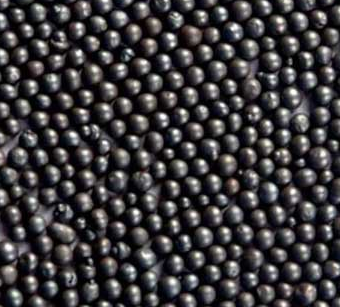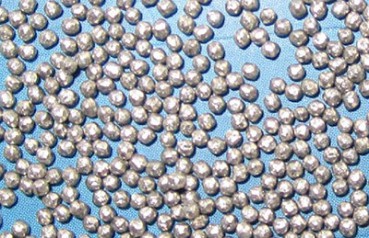Particle size and ratio of steel shot abrasive
In order to achieve better uniform cleanliness and roughness distribution, it is very important to design the particle size and proportion of steel shot abrasives. If the roughness is too large, the anti-corrosion layer at the anchor pattern peak will become thinner. Meanwhile, due to the deep anchor pattern, the anti-corrosion layer is prone to forming bubbles during the anti-corrosion process, which seriously affects the new energy generation of the anti-corrosion layer.
If the roughness of the steel shot is too small, the adhesion and impact resistance strength of the anti-corrosion layer will decrease. For severe internal pitting corrosion, it is not enough to rely solely on the high-intensity impact of large abrasive particles. It is also necessary to rely on small abrasive particles to polish away the required corrosion products to achieve cleaning effect. Meanwhile, a reasonable proportioning design can not only slow down the wear of abrasives on pipelines and nozzles (blades), but also greatly improve the utilization rate of abrasives. Usually, the particle size of steel shot ranges from ss-280 (0.8mm) to ss-460 (1.4mm), and the particle size of steel sand ranges from G50 (0.4mm) to G18 (1.2mm), with 0.5mm-1.0mm as the main component. The steel grit ratio is generally 5-8.
It should be noted that in practical operation, it is difficult to achieve the ideal proportion of steel grit and steel shot in the abrasive, because the hard and fragile steel grit has a higher crushing rate than the steel shot. For this reason, continuous sampling and testing of mixed abrasives should be carried out during operation. Based on the particle size distribution, new abrasives should be added to the rust remover, and the amount of steel sand should be the main component of the new abrasives added.
Editor: Lena

steel shot Relevant information
steel shot Related Products
- E-mail zs@sdsmachinery.com
- whatsapp +8615653328535
- Wechat +8615965331535
-
Shandong Metal Abrasive Co., Ltd produces China steel shot and alloy steel shot at a low price, with a complete range of models and a professional team




